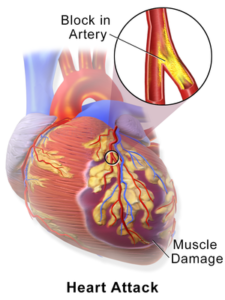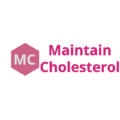Table of Contents
Introduction
A heart attack is a serious medical condition that occurs when the blood supply to the heart is blocked. This can damage or destroy part of the heart muscle.
Heart attack is a leading cause of death in the United States, but it is often preventable.
By understanding the criteria for heart attack and no heart attack, you can take steps to reduce your risk. In this blog post, we will discuss the different factors that can be used to assess your risk of heart attack.
Criteria for a person to be likely to have a heart attack

A person is likely to have a heart attack if they have the following criteria:
• Blocked arteries: Heart attack is most likely to occur when the arteries that supply blood to the heart are blocked with plaque. Plaque is a substance made up of cholesterol, fat, and other substances.
• Abnormal lipid profile: Lipid profile is a blood test that measures the levels of cholesterol and triglycerides in the blood. An abnormal lipid profile, such as high cholesterol levels, is a risk factor for heart attack.
Generally the blood LDL (bad) cholesterol levels are higher.
If LDL levels are higher then it may deposit in the arteries forming a plaque.
• Elevated lipoprotein(a) levels: Lipoprotein(a) is an emerging and independent risk factor of heart disease. It is a molecule similar to LDL cholesterol with an additional protein molecule called apolipoprotein(a) is attached to it.
High levels of lipoprotein(a) are a risk factor for heart attack. It is more atherogenic than LDL cholesterol
Latest research shows that the plaque attached to the arteries mainly consists of lipoprotein(a) and not LDL.
• Poor diet deficient: Eating a poor diet increases the risk of heart attack. Why? Eating a diet rich in sodium, high in saturated and trans fats, rich in sugar and sugary drinks, white and processed flour and low in fruits and vegetables is what constitutes poor diet. Such a diet increases the risk of heart disease.
A poor diet is deficient in certain essential nutrients and micronutrients, which are essential for life processes.
• Other risk factors: Other risk factors for heart attack include
- Smoking,
- Drinking alcohol
- High blood pressure,
- Diabetes, and
- A family history of heart disease.
- Obesity
- Sedentary lifestyle
Criteria for a person to be unlikely to have a heart attack
A person is unlikely to have a heart attack if they have the following criteria:
• Clean arteries with no plaque deposition:
If a person has no plaque buildup in their arteries, then their risk of a heart attack is very low. The calcium score reading should be zero or as low as possible.
• Normal lipid profile with normal LDL levels:
A normal lipid profile with normal LDL levels indicates that a person has healthy cholesterol levels. This reduces their risk of heart disease.
• Normal lipoprotein(a) levels:
Normal lipoprotein(a) levels indicate that a person does not have a high risk of heart disease.
• Healthy diet, not deficient in any nutrients:
A healthy diet provides the body with all the nutrients it needs to function properly. This reduces the risk of heart disease and other chronic health conditions.
• Other low-risk factors:
Other factors that reduce the risk of heart attack include not smoking, having normal blood pressure, and not having diabetes or a family history of heart disease.
How should young people assess your risk of heart attack
Many young people in the age group 25 to 45 are dyeing of heart attack. They may be going to gym, doing exercises and are free from bad habits like smoking and drinking alcohol.
What should youngsters,who want to prevent heart attack, should do to prevent heart attack? How they can asses their risk of heart disease.
These are some guidelines to help them:
If they are smoking, then there is every chance that their LDL and Lp(a) levels are high. And the process of atherosclerosis is in progress. Since, the deposit is less than 60 to 70% they feel absolutely normal. Their lipid levels may also be in normal range.
Similar is the case with people who drink alcohol.
If they go to gym, do yoga, and do exercise at home, they may also have some blockages. It depends upon the type of food they eat.
If they are habitual drinkers of sugary drinks like Pepsi and sweetened fruit juices, eat fast food like burgers, pizza, noodles, Maggi etc. then some internal disturbance might have taken place.
If you really want to confirm whether any blockages are present or not then talk to your doctor and get the non invasive calcium score test done.
If your calcium score is zero, then your arteries are clean and healthy.
If calcium score is positive then there me some plaque deposition in some of your arteries.
If you are concerned about your risk of heart attack, talk to your doctor. They can assess your risk factors and recommend ways to reduce your risk.
What should young people do prevent hart attack?
Whatever strategy you use to prevent heart attack like
- Lifestyle changes;
- losing weight;
- Diet to reverse heart disease and or lose weight
- Medications to lower cholesterol like statins,
- foods to lower cholesterol
make it a point to check……………………..
can it clear my existing plaque and change from clogged artery to clean arteries;
And when existing arteries are clean, can it help me keep my arteries clean
Conclusin
Eating healthy food is very essential to keep arteries clean, which is an indicator to prevent heart attack. If already having certain blockages in the arteries, completely removing those blockages is very essential to prevent heart attack and lead a healthy life.

